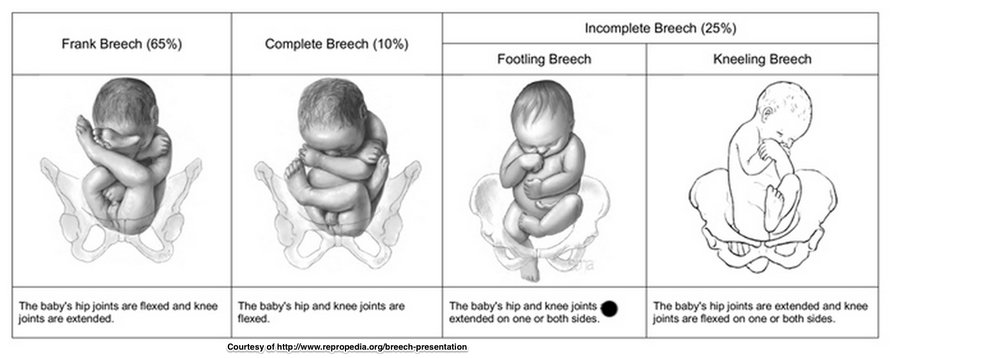Acupuncture's Effectiveness Treating Breech Presentation, "Remarkable"
A breech presentation is a gestational problem where the infant is inverted relative to the position necessary for a healthy birth to occur. The ideal position for the fetus is with their head oriented toward the birth canal. In a breech, the child is head up/feet down.
Acupuncturists are often sought out because of our long history treating breech and helping the infant move into the proper position for a healthy birth. We use a combination of acupuncture and a technique called moxa to encourage the body and the baby to move into the ideal conformation.

Research:
Many studies have been done all of which show a dramatic improvement in breech outcome. A representative study can be found in the Journal of the American Medical Association (JAMA):
In the results section of the study the treated women experienced
a mean of 48.45 fetal movements vs 35.35 in the control group (P<.001; 95% confidence interval [CI] for difference, 10.56-15.60). During the 35th week of gestation, 98 (75.4%) of 130 fetuses in the intervention group were cephalic vs 62 (47.7%) of 130 fetuses in the control group (P<.001; relative risk [RR], 1.58; 95% CI, 1.29-1.94). Despite the fact that 24 subjects in the control group and 1 subject in the intervention group underwent external cephalic version, 98 (75.4%) of the 130 fetuses in the intervention group were cephalic at birth vs 81 (62.3%) of the 130 fetuses in the control group (P = .02; RR, 1.21; 95% CI, 1.02-1.43).
The researchers concluded that,
Among primigravidas with breech presentation during the 33rd week of gestation, moxibustion and acupuncture for 1 to 2 weeks increased fetal activity during the treatment period and cephalic presentation after the treatment period and at delivery.